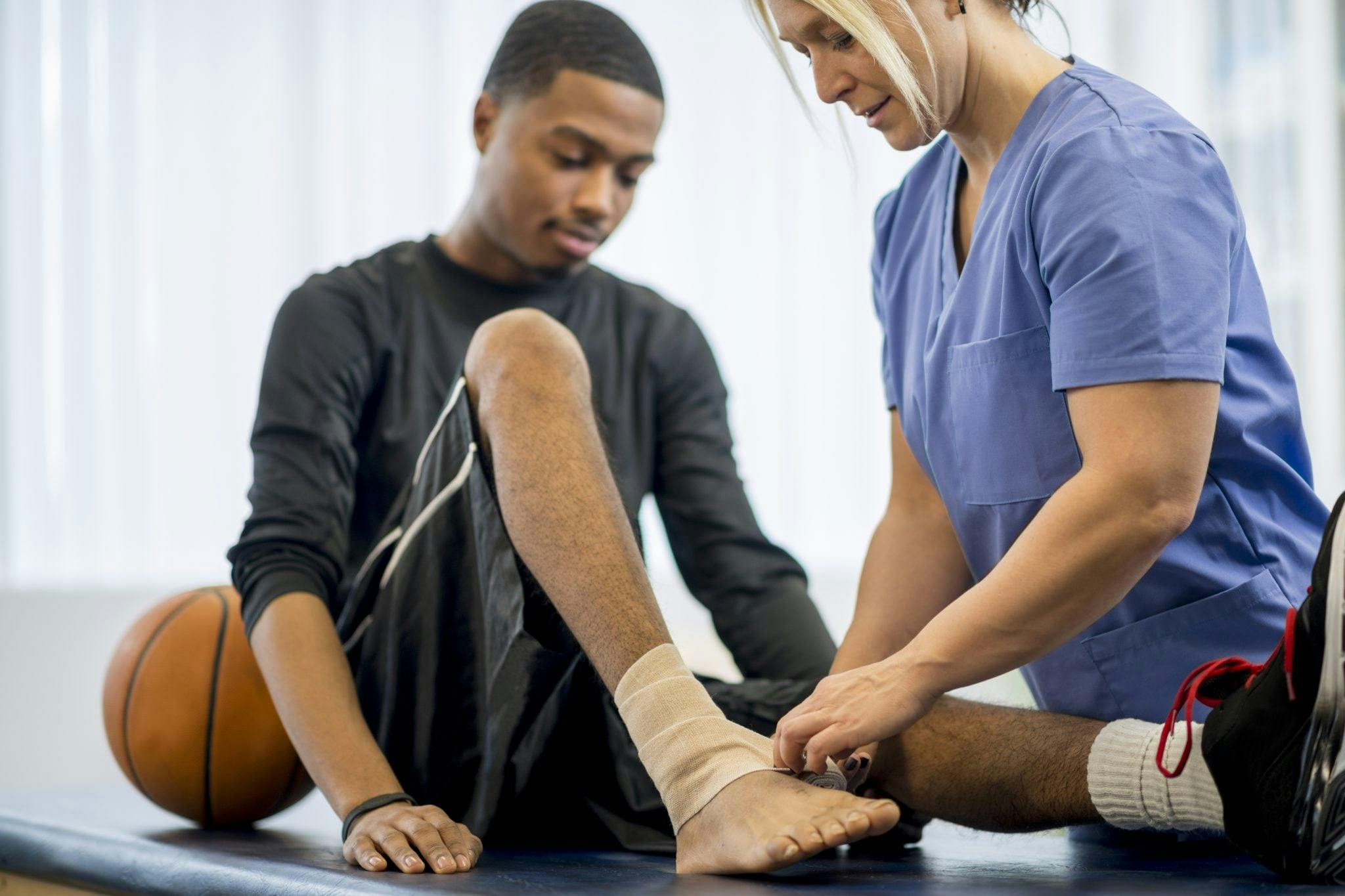Soft tissue areas like muscles, tendons and ligaments are regularly injured during sports and other forms of exercise, but injuries to these areas can also occur during basic, everyday activities. These types of injuries range from sprains and strains to tendinitis and bursitis, and also include basic contusions (bruises).
Soft Tissue Injury Categories
Soft tissue injuries fit into two categories:
- Acute injuries: Caused by a sudden trauma like a fall, twist or blow to the body. These include strains, sprains and bruises.
- Overuse injuries: Occur gradually and over time when an activity is repeated often and an area of the body does not have time to heal in between. Common overuse injuries include tendinitis and bursitis.
Types of Acute and Overuse Soft Tissue Injuries
Here are some basic facts about the three types of acute injuries to soft tissues:
- • Sprains: A sprain is a stretch or tear of a ligament, which is a band of connective tissue attaching one end of a bone to another. Ligaments support the joints throughout the body. Areas most prone to sprains include the ankles, knees and wrists. Sprains are classified by severity: Grade I (mild, slight stretching to ligament fibers), Grade II (moderate, partial tearing of the ligament) and Grade III (severe, complete tear of the ligament). Pain, bruising, swelling and inflammation are common in all three grades.
- Strains: A strain is an injury to a muscle or a tendon—the cords of tissue that attach muscles to bone. Strains are most common in the foot, leg or back. Strains can be characterized by a slight stretch, or by a partial or complete tear in the combination of muscle and tendon. Symptoms often include pain, muscle spasms, muscle weakness, swelling, inflammation and cramping. Contact sports along with sports featuring quick starts (hurdling, long jump, running, etc.) present risks for strain, as do sports that require extensive gripping or swinging.
- Contusion (bruises): A contusion is a bruise caused by a direct blow or multiple repeated blows. These blows crush muscle fibers and connective tissue without breaking the skin, and generally cause discoloration of the skin due to blood pooling near the injury. Most bruises are mild.
Overuse soft tissue injuries include:
- Tendinitis: Inflammation or irritation of a tendon or the covering a tendon, generally caused by a number of small stresses that aggravate the tendon over time. Symptoms of tendinitis include swelling and pain that gets worse during activity. It can be treated with rest, anti-inflammatory medication, steroid injections, splinting, and exercises to correct imbalances and improve flexibility.
- Bursitis: The body has jelly-like sacs located throughout the body that act as cushions to reduce friction between bones and soft tissues. These sacs are called bursae, and bursitis is the inflammation of these sacs. Bursitis can be caused by repeated small stresses and can be experienced in association with tendinitis. Treatments may vary depending on severity, but can range from changes in basic activity to surgery in rare cases.
RICE Protocol for Acute Treatment
For acute soft tissue injuries, the RICE protocol is generally used:
- Rest: Stop participating in the activity that caused the injury. In some cases, your doctor may recommend crutches, splints or slings.
- Ice: Use cold packs for 20 minutes at a time, several times a day. Don’t apply it directly to the skin.
- Compression: Wear an elastic compression bandage to prevent additional swelling or blood loss.
- Elevation: Elevate the injury higher than the heart while resting to reduce swelling.
Prevention
Many injuries occur when people suddenly increase elements of their activity like intensity, duration or frequency of exercise. Oftentimes, injuries can be prevented through the right conditioning, training and equipment. Other prevention tactics include:
- Balanced programs: Incorporate cardiovascular exercise, strength training and flexibility into your fitness. Add new activities cautiously to allow the body to adjust.
- Warm up and cool down: Warm up before stretching, and make cooling down your final phase of exercising.
- Water: Drink one pint of water 15 minutes before exercising and another pint after cooling down. Drink some water at least once every 20 minutes during exercise.
- Stretch: Stretch slowly and carefully until you reach muscle tension, then hold each stretch for 10 to 20 seconds before slowly releasing it. Inhale before stretches, and exhale during release. Don’t hold stretches to the point of pain.
- Rest: Schedule regular days off from heavy exercise, and rest when tired.
- Avoid “weekend warrior” syndrome: Try to get at least 30 minutes of moderate exercise each day rather than packing it into weekends or free periods of time.
If you’ve undergone a soft tissue injury or are at risk, your doctor can offer further recommendations for treatment or prevention.
I treat people of all ages in my practice—kids, athletes, adults and retirees––and enjoy being able to understand people’s unique situations in order to help them recover.
Sources:
“Sprains, Strains and Other Soft-Tissue Injuries.” American Academy of Orthopaedic Surgeons. http://orthoinfo.aaos.org/topic.cfm?topic=a00111
“Sprains and Strains.” MedlinePlus. https://medlineplus.gov/sprainsandstrains.html






